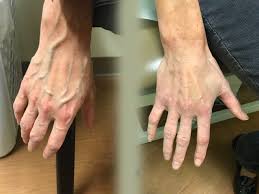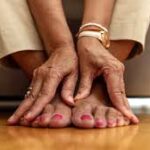Understanding Why Veins Appear Visible on Some Skin

Veins are an essential part of the circulatory system, responsible for returning deoxygenated blood back to the heart. While veins exist throughout the body, they are more visible on some people’s skin than others. Several factors contribute to the visibility of veins, including skin color, thickness, body composition, and physiological conditions.
- Skin Color and Tone
One of the primary reasons veins appear more visible on certain individuals is due to skin color and tone. People with lighter skin tones tend to have more visible veins because the contrast between the blue or greenish color of veins and the paler skin is more pronounced. In contrast, individuals with darker skin tones have more melanin, which can obscure the underlying veins, making them less noticeable. - Skin Thickness
The thickness of the skin plays a significant role in vein visibility. Thinner skin allows veins to be seen more clearly. As people age, their skin tends to thin and lose fat, causing veins to become more prominent. Additionally, certain areas of the body naturally have thinner skin, such as the hands, wrists, and inner arms, which is why veins are more visible in these locations. - Body Composition and Fat Levels
Lower levels of subcutaneous fat (fat beneath the skin) can make veins more visible. When there is less fat cushioning the veins, they are closer to the surface and easier to see. This is why athletes or individuals with low body fat percentages often have more visible veins. Conversely, higher fat levels can obscure veins, making them less noticeable. - Temperature and Physical Activity
Veins can become more visible during or after physical activity or exposure to heat. Exercise increases blood flow and causes veins to dilate to accommodate the higher volume of blood returning to the heart. Similarly, warmth causes veins to expand, making them more prominent. Conversely, cold temperatures cause veins to constrict, reducing their visibility. - Genetics and Health Conditions
Genetics also plays a role in vein visibility. Some people naturally have veins that are closer to the skin’s surface or larger veins, making them more visible. Certain health conditions can affect vein appearance as well. For example, varicose veins are enlarged, twisted veins often visible on the legs due to weakened vein walls or valves. Other conditions, such as vascular diseases or skin disorders, may also influence how veins appear. - Hydration and Blood Volume
Dehydration can make veins less visible because the blood volume decreases and veins may constrict. Conversely, proper hydration helps maintain blood volume and vein size, enhancing their visibility under the skin.
In summary, the visibility of veins on the skin is influenced by a combination of skin characteristics, body composition, environmental factors, genetics, and health status. While visible veins are usually normal and harmless, sudden changes in vein appearance or the presence of pain and swelling may warrant medical evaluation. Understanding these factors can help explain why veins appear more prominent in some individuals than others.
“Beat the Pressure: A Comprehensive Guide to Lowering Blood Pressure Naturally.”
Buy book from Gumroad or Paystack
💔 “She said she loved me. And for fifty-two years, I believed her.” 💔
Buy The Book "The Longest Lie: A Husband’s Journey Through Love, Betrayal, and Redemption" From Gumroad






